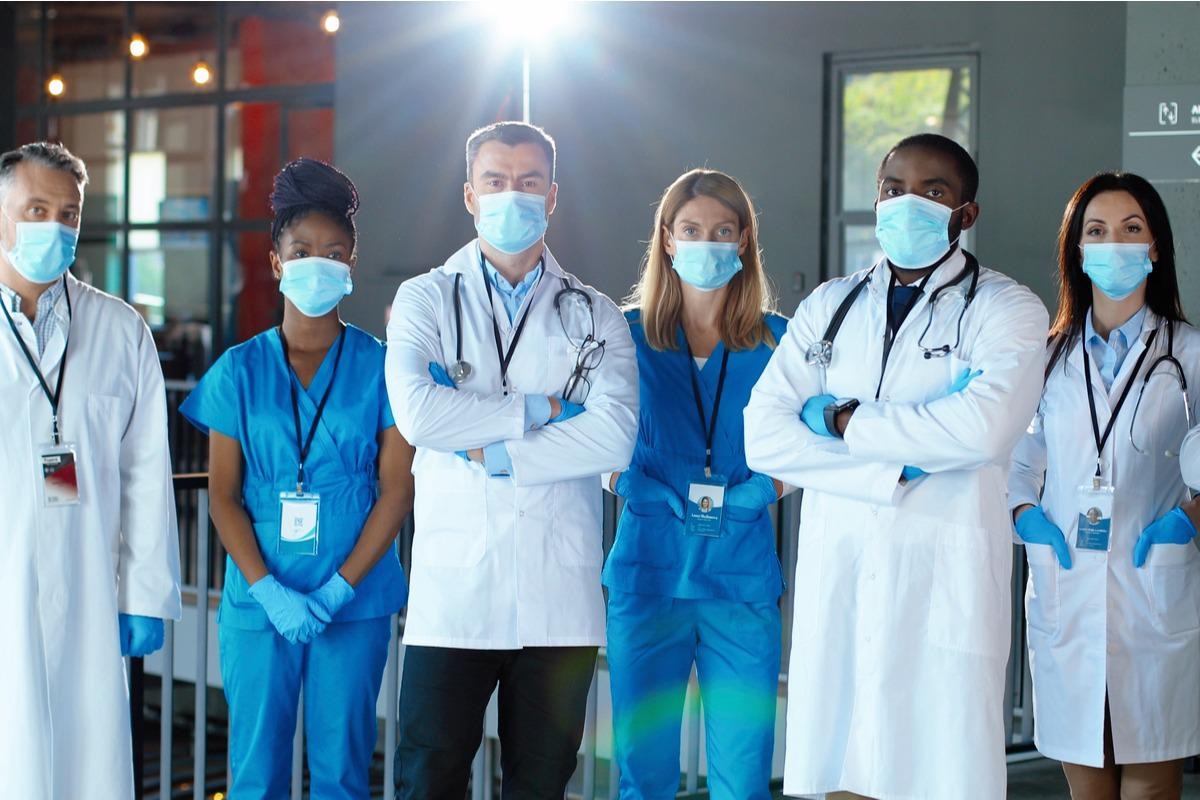 By Sam HancockReviewed by Danielle Ellis, B.Sc.Dec 7 2021
By Sam HancockReviewed by Danielle Ellis, B.Sc.Dec 7 2021Coronavirus disease 2019 (COVID-19) has caused massive economic and health crises worldwide, and some of the most at-risk individuals are healthcare workers. While many governments enacted measures to protect them, such as priority vaccination, healthcare workers remain individuals most in danger of catching the disease. Even with mass vaccination schemes, many of the new severe acute respiratory syndrome coronavirus 2 (SARS-CoV-2) variants, such as the Beta and Delta strains, have shown the ability to evade vaccine-induced immunity.
 Study: Risk Factors for SARS-CoV-2 Infection Among US Healthcare Personnel, May–December 2020. Image Credit: M_Agency/Shutterstock
Study: Risk Factors for SARS-CoV-2 Infection Among US Healthcare Personnel, May–December 2020. Image Credit: M_Agency/Shutterstock
In a study published in Emerging Infectious Diseases, researchers from the CDC have investigated the risk posed to healthcare workers and which factors are most likely to lead to infection.
The study
The researchers received samples from five American states, including acute-care hospitals, nursing homes, and outpatient clinics. Cases are defined as healthcare personnel (HCP) currently working in healthcare facilities who returned a positive SARS-CoV-2 test result, either a PCR or antigen test. Controls are HCP who worked in healthcare facilities and received a negative result.
Two controls were matched to each case by facility and week of the test. Cases that did not receive matched controls were not included.
HCP received a standardized questionnaire to collect information about demographics, activities outside the workplace, COVID-19 patient care, and PPE use in the days before specimen collection or symptom onset. These questionnaires were designed to identify those likely to have close contact with COVID-19 in and out of the workplace, those participating in aerosol-generating procedures for COVID-19 patients/caring for COVID-19 patients, and wearing PPE during COVID-19 care activities.
The characteristics of HCP were summarized using frequencies for categorical variables and medians for continuous variables. Acyclic graphs were used to determine the variables eventually included in multivariable conditional logistic regression models. Two models were created to include HCP for the variables evaluated and calculated adjusted matched odds ratios and 95% CIs for exposure variables.
The first model evaluated how much of an impact contact with COVID-19 positive individuals outside the workplace and COVID-19 patients within the workplace had on the risk of the HCP contracting COVID-19. This model was adjusted for the demographic factors mentioned earlier, healthcare roles, and any underlying medical conditions.
The second model was used to check whether selected practices such as participating in aerosol-generating practices with COVID-19 patients, wearing the right PPE, or performing care activities with COVID-19 patients were associated with SARS-CoV-2 infection. This model was difficult to match as there were very small numbers of cases and controls when matched per week, so cases were post-matched by month of specimen collection. Once again, the model was adjusted by the same factors.
A total of 33,644 HCP were reported by 25 facilities, approximately 3500 cases, and over 30,000 controls. Following those who declined participation or were not eligible, 622 controls were included in the research, and 345 cases. 72.5% of those included worked in a hospital, the median age of HCP was 35, and the vast majority of participants were white. 36.8% reported close contact with COVID-19 positive individuals outside the workplace, and 32.8% reported close contact with COVID-19 patients within the workplace.
As expected, cases were significantly more likely to report contact with COVID-19 positive individuals inside and outside the workplace. A higher percentage of cases and controls also reported assisting COVID-19 patients. The proportion of cases who reported wearing the correct PPE at all times during aerosol-generating procedures was lower than the proportion of controls who reported the same.
Conclusion
The authors highlight that their analysis includes responses from various healthcare personnel from different facilities and across multiple different states. After controlling for demographic characteristics and other factors such as healthcare roles and medical conditions, they determined that odds for cases were 6.2 fold higher for close contact with COVID-19 positive individuals outside the workplace and 1.6 fold higher within the workplace.
Multiple other studies have revealed similar findings, and it is well known that close contact with COVID-19 positive individuals is one of the largest risk factors for contracting the disease. However, this study also provides some novel data about the risk for aerosol-generating procedures. The researchers suggest that to combat the additional risk, healthcare facilities reserve key items of PPE for HCP undergoing these procedures, especially in times of shortage.